Building a championship team goes far beyond assembling a group of talented individuals. It’s about fostering clear communication, trust, and a shared purpose. The most successful teams are built on strong relationships, mutual accountability, and a culture where everyone feels valued and responsible. Even the most skilled groups struggle to perform consistently without these vital elements.
By drawing on the leadership principles from The Colonel and The Coach, we see that the combination of military discipline and coaching strategies can create a powerful, cohesive team. Leadership that blends care with discipline helps teams reach higher levels of success and resilience. This approach enables leaders to lay the foundation for both top-tier performance and lasting connections.
Core Principles of Championship Team Building
At the heart of any great team are clear standards, a united focus, and open lines of communication. These foundational elements are essential for creating a team that works well together, stays on track, and holds each other accountable. It’s not just about getting the job done; it’s about doing it in a way that builds lasting trust and performance.
Establishing a Winning Culture
A winning culture starts with behavior—not just results. Great leaders create an environment where effort is celebrated just as much as success. They encourage risk-taking, learning from failure, and growth, ensuring every team member feels comfortable stepping out of their comfort zone to achieve something bigger.
Daily habits are critical. High-performing teams establish routines that nurture discipline while fostering creativity. Each team member understands their unique role and how it contributes to the group’s overarching goal.
Influence comes from leadership at every level of the team, not just from the top down. When all members model respect, purpose, and collaboration, the culture spreads organically, boosting motivation and keeping everyone focused on their shared goals.
Setting Vision and Values
A clear and compelling vision provides direction and gives meaning to everyone’s work. It answers the key question: What does winning truly mean? Strong values guide behavior and help define the effort and attitude expected from each team member.
A successful vision and set of values should be simple, specific, and easy to remember. They act as a compass during tough times, helping teams stay consistent even when challenges arise. The vision should also include measurable goals, so teams can track progress and hold themselves accountable for their success.
Building Trust and Accountability
Trust is the cornerstone of any championship team. It is built through honesty, consistency, and keeping promises. When trust is present, communication flows more smoothly, and conflict is minimized. Trust isn’t a one-time achievement—it’s something that must be cultivated over time.
Accountability is equally important. It means holding each other responsible in a respectful and fair way. Teams that prioritize transparency, clear roles, and feedback loops create a culture where accountability isn’t seen as a burden, but as an essential part of collective growth.
When teams embrace trust and accountability, they experience fewer conflicts and more cooperation.
Leadership Strategies for High-Performing Teams
Effective leadership is about more than just giving orders—it’s about inspiring commitment, motivating individuals, and helping teams recover from setbacks. Leaders connect with their teams and guide them through challenges while fostering high performance.
Effective Communication Techniques
Great leaders know that clear and direct communication is essential to avoid confusion. They actively listen to their teams and encourage open, honest dialogue. By establishing two-way communication, leaders can identify and address issues before they escalate, building trust within the team.
Leaders should also tailor their communication style to their audience, using simple language and focusing on key messages. Regular check-ins or structured team meetings ensure that everyone stays aligned. It’s not just what is said—it’s how it’s said. Non-verbal cues, like body language and tone, are powerful tools in effective communication.
Transparency in goal-setting and expectations helps reduce uncertainty and boosts performance, while making sure everyone is on the same page.
Motivational Leadership Approaches
Effective motivation starts by understanding what drives each team member. High-performing leaders take the time to recognize individual strengths and match tasks with each person’s unique abilities. Positive reinforcement encourages effort and growth, ensuring that motivation stays high even during tough stretches.
Leaders share a clear vision that connects individual purpose with team goals. By celebrating small wins along the way, leaders build momentum, foster confidence, and keep morale high. Recognition should be authentic and consistent, ensuring team members feel valued for their contributions.
Developing Resilience and Adaptability
Resilience is the ability to bounce back quickly from setbacks, and it’s a vital trait for championship teams. Leaders build resilience by encouraging a growth mindset and teaching their teams to learn from mistakes. Teams that are prepared for change can adapt to new challenges with confidence and determination.
Adaptability also means being able to shift plans when circumstances change. Leaders who remain calm and flexible set the tone for the team, promoting problem-solving and experimentation within safe limits. When leaders model resilience and adaptability, they create a secure environment where teams are more willing to take on new challenges.
Talent Recruitment and Selection
Recruiting the right talent goes beyond skills; it’s about finding individuals who fit the needs of the team and who will bring diverse strengths. Effective recruitment strategies focus on identifying people who not only possess the right skills but also share the team’s values and are a good cultural fit.
Identifying Potential Champions
Successful recruitment looks beyond just technical abilities. It considers a candidate’s work ethic, resilience, and coachability—traits that are essential for long-term success. Mental toughness and openness to feedback are key indicators of an individual’s potential to thrive under pressure and continuously improve.
Recruiters should pay attention to performance history, how candidates respond to challenges, and their willingness to learn and grow. Observing interactions with teammates can provide valuable insights into leadership potential and the ability to support the team’s mission.
Diversity in Team Composition
A diverse team is stronger, more creative, and better equipped to tackle challenges. Diversity encompasses a range of qualities—age, background, experience, and even different playing styles or problem-solving approaches. Teams that embrace diversity adapt more quickly and come up with more innovative solutions to problems.
Leaders create a culture where differences are seen as strengths. When diversity is valued, communication improves, trust deepens, and the team’s overall success increases.
Team Dynamics and Cohesion
Teams that work well together are those that connect on a personal level, respect each other’s perspectives, and resolve conflicts quickly. Strong interpersonal relationships and a clear approach to conflict resolution help maintain focus and energy toward achieving the team’s goals.
Building Strong Interpersonal Relationships
Team cohesion is built on mutual trust and respect. Leaders encourage these relationships by fostering honest communication, active listening, and shared experiences. When people feel heard and valued, their commitment to the team grows.
Small actions like recognizing individual efforts, providing feedback, or simply asking for opinions help to strengthen bonds over time. By being transparent and approachable, leaders can break down barriers and encourage vulnerability, which in turn supports collaboration.
Conflict Resolution Methods
Conflicts are natural, but how they are handled can determine the success of the team. Teams should have clear processes for addressing disagreements. By focusing on facts, listening to all parties involved, and keeping discussions solution-oriented, conflict can be resolved in a constructive way.
Leaders play a crucial role in guiding teams through these moments. When tension arises, they intervene calmly, ensuring the issue is addressed respectfully and the team remains focused.
Skill Development and Continuous Improvement
For a team to perform consistently, skill development should be ongoing. High-performing teams prioritize continuous improvement, focusing on building individual and group abilities over time.
Tailored Training Programs
Training should address the specific needs of the team and each individual member. Tailored programs ensure that weaknesses are targeted and strengths are further developed. Personalized learning plans build on existing skills while addressing areas for growth.
In addition to technical training, real-life scenarios and hands-on experiences make the training process more effective. Regular check-ins allow for adjustments and ensure everyone is on the right path.
Performance Feedback Systems
Effective feedback is vital for progress. Leaders should provide consistent, constructive feedback using a blend of methods, including one-on-one reviews, peer assessments, and self-evaluation.
Clear, actionable feedback ensures that everyone knows what they are doing well and where they can improve. Feedback should always focus on behaviors and results, rather than personal traits, helping to foster a culture of learning.
Strategic Goal Setting and Monitoring
Successful teams set clear targets and regularly track progress. Goal-setting aligns individual actions with the team’s larger mission, ensuring that everyone stays focused and engaged.
Aligning Individual and Team Objectives
Each team member’s goals should support the overarching mission. Breaking down larger team objectives into smaller, specific targets for individuals creates ownership and a sense of purpose. When everyone sees how their contributions fit into the bigger picture, motivation increases, and team cohesion strengthens.
Tracking Progress and Celebrating Success
Regular reviews help teams stay on track. Recognizing small wins along the way reinforces progress and keeps motivation high. Celebrating achievements helps build confidence and reinforces the team’s commitment to success.
Sustaining Long-Term Team Success
The key to maintaining success over time is fostering continuous motivation and adapting strategies to overcome new challenges. Teams that develop sustainable habits and stay flexible are the ones that will continue to perform at a high level.
Maintaining Motivation Over Time
To keep motivation high over the long term, leaders should set clear goals, celebrate small wins, and regularly acknowledge individual contributions. Maintaining a strong sense of purpose helps prevent burnout and ensures that team members stay engaged.
Adapting to Evolving Challenges
As teams grow and compete, new challenges will inevitably arise. Successful teams stay flexible and proactive, constantly assessing their performance and adjusting strategies to meet new demands. Leaders foster a culture of learning, where mistakes are viewed as opportunities for improvement.
Frequently Asked Questions
How do championship teams build unity?
Championship teams build unity by focusing on trust, shared goals, and regular team activities. They encourage open communication, respect for diverse roles, and a commitment to collective success.
What strategies do championship teams use for effective communication?
Clear expectations, active listening, and direct feedback are core communication strategies. Leaders also foster an environment where team members feel comfortable speaking up without fear of judgment.
How do coaches implement effective communication in championship teams?
Coaches set clear expectations, listen actively, and promote open dialogue. They provide timely feedback and create a space where everyone’s voice can be heard.
What role does leadership play in the development of a successful team?
Leadership sets the tone by modeling commitment, respect, and clear communication. Effective leaders inspire and keep the team focused on their mission.
How do championship teams measure and track their building progress?
They use regular performance reviews and team check-ins. Tracking both individual and group goals helps identify strengths and areas needing improvement.


